
Imprisoned on Drug Charges, Woman Seeks COVID Clemency
|
Sandra Lawson was only months away from graduating high school when she found out her grandfather had died.
Juvenile Justice Information Exchange (https://jjie.org/tag/heroin/)

Sandra Lawson was only months away from graduating high school when she found out her grandfather had died.

Chloe Rodriguez gazes down the sidewalk on East 150th Street. It’s dusk and she has shed her school uniform for a black hoodie. Her night shift, as a receptionist...
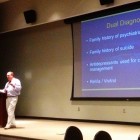
At the National Collegiate Recovery Conference Wednesday at Kennesaw State University, Michael Fishman, Director of the Young Adult Program at Talbott Recovery Campus in Atlanta, neatly summed up everything he had learned in 22 years of treating addiction in young adults. The recurring theme of his keynote address: It’s complicated. “Most young adults are generally poly-substance abusers,” he said. They aren’t just using marijuana; they’re also drinking, Fishman says. It’s not just opioids, it’s opioids and anti-depressants or any other combination.
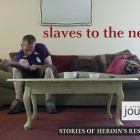
Heroin may be about to get a mean on. That’s what JJIE’s Ryan Schill writes in a three-part series this week. Though statistics don’t show an enormous surge in heroin arrests, both current and former users, as well as counselors report an upsurge in use among teens, mostly white, mostly suburban. Increased supply, its relative low cost and the prevalence of opiate-based prescription medications all play a role in what seems to be going on. These aren’t happy stories Schill tells, and these aren’t pretty pictures photographer Clay Duda offers.
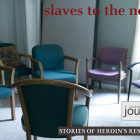
Mona Bennett never leaves the house without her Braves baseball hat. The cap itself is hidden beneath dozens of buttons of all shapes and sizes pinned to every available surface with messages from “Rock the Vote” to “This place really cooks!” But Bennett is most proud of a series of buttons from the Atlanta Harm Reduction Center (AHRC) where Bennett is the program director. The buttons and the hat always draw curious stares and questions. And Bennett is always happy to answer.
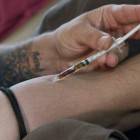
Officials in northern Ohio are seeing what they describe as an epidemic of drug use and offenses by juveniles. In Geauga County, in northeast Ohio, drug charges increased by 38.8 percent, and felony drug charges increased by 180 percent, according to the local juvenile court's 2010 annual report. The main drug being used is marijuana, while heroin is making a comeback, the report says. Underage drinking cases in Geauga County have been the main reason children came to court in 16 of the last 18 years, but the cases are down this year, according to the News-Herald, a daily located in Willoughby east of Cleveland. Officials attribute the increase in charges to crime enforcement efforts being made by a new judge.

Editor's Note: The following story contains graphic language and images. It may not be suitable for all readers. One day, long before he found himself wanting to die in a cheap motel, Chris Blum got caught shooting up heroin at work. Needless to say, he lost his job.
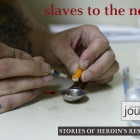
Chris Blum is laughing again, each breath a small wheeze followed by a noise that cuts through the surrounding sounds of the coffee shop patio. It’s full and rich, staccato and guttural; four beats long, the laugh of a man who sees the blessing in having anything to laugh about at all.
He’s a big guy, tall with a softness that comes with the newfound freedom to eat food without vomiting it back up again. Not long ago, Blum was a heroin addict. On this hot, sunny afternoon, Blum is sitting under an umbrella, dabbing perspiration away with a napkin and telling me about one of his jobs when he was an addict: a money collector for his dealer.
“I was a nice guy the first time,” he says, smiling. “The second time you didn’t see me coming.”
But then there’s the change, the dip from major to minor keys as he stops laughing. Sitting outside, I can’t see his eyes behind the dark sunglasses, but his smile quickly fades as he recounts one method of collecting a debt.
“The second time,” he continues, “you’d walk in the door and your girlfriend would be duct-taped and I’d have a gun to her head and a broomstick shoved up her ass.”
Blum pauses for a moment turning his face to mine, his last words hanging there awkwardly.
Chris Blum. Photo by Ryan Schill
Heroin addicts will do anything for a fix, Blum tells me, things they never thought they were capable of. For Blum, that meant helping his dealer with the dirty work.
“You’re not a very nice guy if you’re collecting money for drug dealers,” he said. “At that point, I did more drugs just to erase the memories of the crazy shit I was doing to people.”
Drugs in this country come in and out of style. Some of them leave the scene pretty quickly, thank goodness.
Then there are the ones that always seem to linger unwelcomed, sometimes quiet in the background, sometimes bursting into the open.
That’s heroin. Like a drunk at an otherwise pleasant gathering, it’s there around the fringes, making people uncomfortable. But then the party goes into a real funk when the drunk gets a mean on and proceeds to ruin everyone’s evening.
Heroin may be about to get a mean on. That’s what JJIE’s Ryan Schill writes in a three-part series this week. Though statistics don’t show an enormous surge in heroin arrests, both current and former users, as well as counselors report an upsurge in use among teens, mostly white, mostly suburban. Increased supply, its relative low cost and the prevalence of opiate-based prescription medications all play a role in what seems to be going on.
These aren’t happy stories Schill tells, and these aren’t pretty pictures photographer Clay Duda offers. So, you should know, this series may not be suitable for all readers. It is sometimes difficult to stomach. It is rife with profanity and disturbing details. Some of the images are graphic. But it is, quite simply, the brutal reality of a life with heroin.
For the most part, it’s a sad story. Yet even in this nightmarish place, there is some hope and in this case it is recovery. One character, hopeless in the shackles of heroin for years, found a way to claw his way to sobriety.
He offers something, not only to others still struggling with addiction, but to all of us. With the help of society, friends, family and loved ones, souls long thought to be lost, can be salvaged.
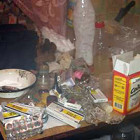
In Russia, a nation with more heroin users than any other in the world, addicts are finding a new, even more devastating way to get high. The drug is desomorphine, a synthetic opiate, but users know it as krokodil, or “crocodile,” because the skin at the injection site turns scaly, grey and reptilian as the surrounding tissue dies. Krokodil is derived from codeine (available over-the-counter in Russia) and freely available household products and it costs a fraction of what true heroin would cost. Although the price in rubles may be low, the physical cost is tremendous. Desomorphine is essentially poison and addicts soon find their skin dying and falling away leaving exposed bone. Sores grow over their bodies or they develop abscesses where the needle misses a vein. Already, 30,000 Russians die each year from heroin overdoses, according to The Independent, but now as many as 100,000 Russians are addicted to krokodil and other homemade drugs. Desomorphine is highly addictive with terrible withdrawal symptoms lasting up to a month. In the poorest parts of Russia where heroin is scarce, krokodil is gaining a strong foothold, due in large part tothe availability of codeine tablets over the counter in the Russian pharmacies. Addicts create the desomorphine by “cooking,” a process that can take up to half-an-hour. Unlike heroin, however, the high is of a shorter duration. Addicts soon find themselves entrenched in a nearly unstoppable cycle of “cooking” and getting high.